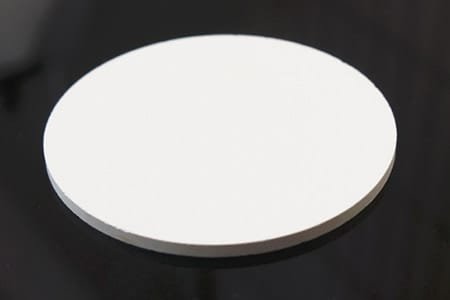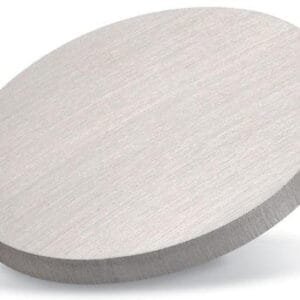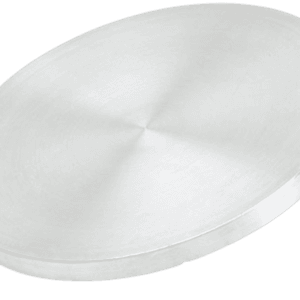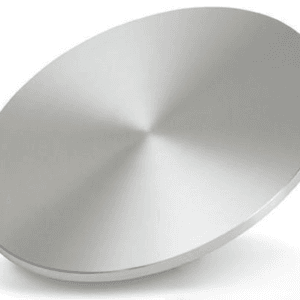Lithium Nickel Phosphate Sputtering Target
Introduction
Lithium Nickel Phosphate Sputtering Target is a specialized ceramic target material designed for thin film deposition in advanced energy and electronic applications. With its unique lithium–nickel–phosphorus chemistry, this material enables the deposition of films with tailored electrochemical and electronic properties. Researchers and industrial users alike value it for fabricating thin-film battery components, functional coatings, and next-generation energy storage devices.
Detailed Description
Lithium Nickel Phosphate (LiNiPO₄) sputtering targets are typically manufactured through high-temperature solid-state synthesis and sintering, resulting in a dense, stable ceramic body suitable for sputtering. The targets are available in standard and custom geometries (circular, rectangular, or planar) to fit different deposition systems.
Key features include:
High Purity (≥99.9%): Essential for minimizing contamination and ensuring reproducible thin-film properties.
Homogeneous Microstructure: Provides uniform sputtering rates and film composition.
Stable Phosphate Framework: Enhances durability and reduces decomposition during sputtering.
Optional Bonding: Indium or elastomer bonding to a copper backing plate ensures reliable heat transfer and mechanical stability in high-power sputtering processes.
The combination of lithium and phosphate contributes to ionic conductivity, while nickel introduces redox-active sites, making the resulting thin films attractive for lithium-ion battery cathode research and related applications.
Applications
Lithium Nickel Phosphate Sputtering Targets are widely used in:
Thin Film Lithium-Ion Batteries – for solid-state cathode layers.
Energy Storage Devices – fabrication of next-generation rechargeable batteries.
Semiconductor R&D – research on functional oxide films.
Optical and Functional Coatings – development of phosphate-based films for electronic and photonic devices.
Material Science Research – studies on ionic conductivity, stability, and electrochemical performance.
Technical Parameters
| Parameter | Typical Value / Range | Importance |
|---|---|---|
| Purity | 99.9% – 99.99% | Ensures reliable thin film performance |
| Density | ≥ 95% of theoretical | Improves film uniformity |
| Diameter | 25 – 150 mm (customizable) | Fits various sputtering systems |
| Thickness | 3 – 10 mm | Influences deposition stability |
| Bonding | Indium / Elastomer / Copper backing | Enhances thermal management |
Comparison with Related Materials
| Material | Key Advantage | Typical Application |
|---|---|---|
| Lithium Nickel Phosphate | High energy density & ionic stability | Thin film batteries, energy R&D |
| Lithium Cobalt Oxide (LCO) | Established cathode material | Consumer electronics |
| Lithium Iron Phosphate (LFP) | Excellent thermal stability | Power storage, EV batteries |
FAQ
| Question | Answer |
|---|---|
| Can Lithium Nickel Phosphate targets be customized? | Yes, we can tailor size, thickness, purity, and bonding. |
| What packaging is used? | Targets are vacuum-sealed with protective cushioning, shipped in export-safe cartons or wooden crates. |
| Which industries benefit most from this material? | Energy storage, thin film battery R&D, semiconductors, and advanced material research. |
| Does the target require special storage? | Yes, store in dry, moisture-free conditions to prevent lithium degradation. |
| Can it be bonded to a backing plate? | Yes, indium or copper bonding is available for high-power sputtering systems. |
Packaging
Each Lithium Nickel Phosphate Sputtering Target is carefully vacuum-packed and externally labeled to ensure easy identification and safe handling. Shock-absorbing foam and export-grade packaging are used to prevent damage during storage and transit, ensuring the targets arrive in excellent condition.
Conclusion
Lithium Nickel Phosphate Sputtering Target is an advanced material tailored for thin film deposition in battery research, semiconductors, and functional coatings. With its high purity, stable structure, and customizable options, it offers researchers and industrial users a reliable pathway to developing next-generation electrochemical devices.
For detailed specifications and a quotation, please contact us at [sales@thinfilmmaterials.com].





Reviews
There are no reviews yet.